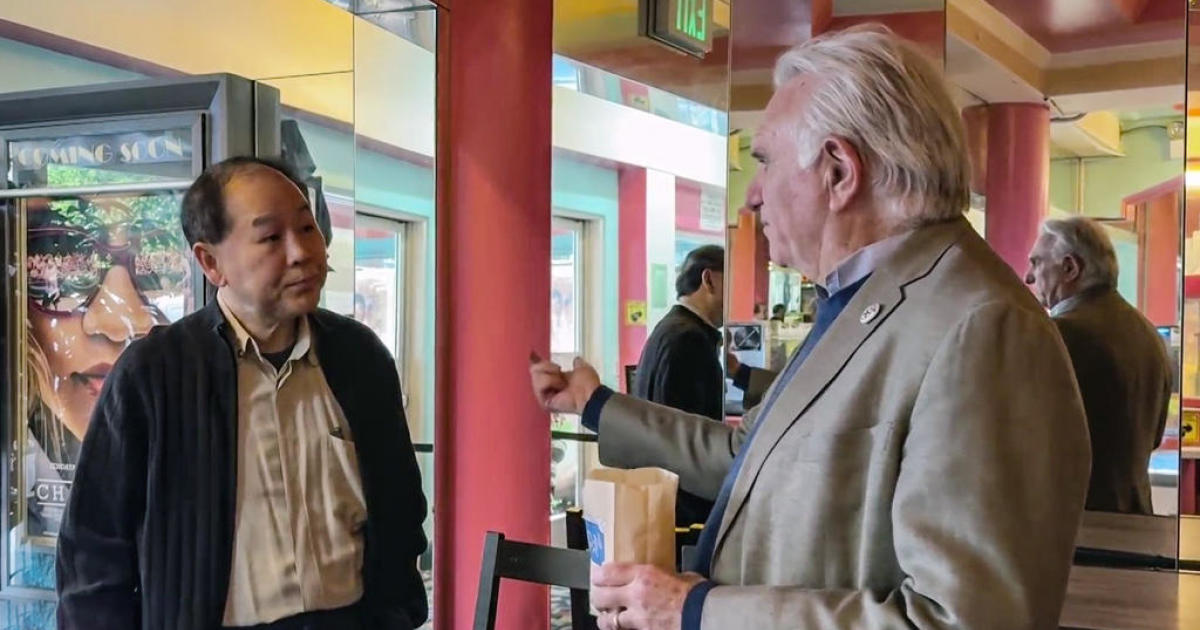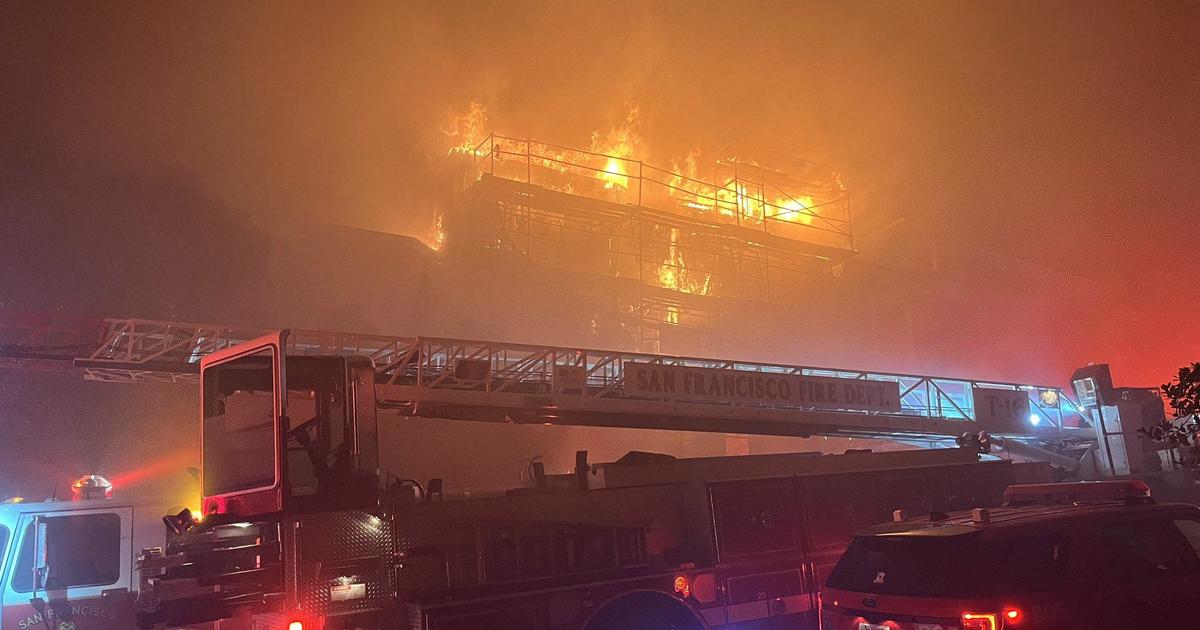KCBS Cover Story: The Dangers Of Living In SF's Sunnydale Housing Projects
SAN FRANCISCO (KCBS)— The slaughter of 26 people in a Connecticut school shocked the nation two weeks ago. But much closer to home, there are children who have to live amid violence and bloodshed on a daily basis in one of the Bay Area's deadliest neighborhoods.
There have been at least 10 murders in and around the Sunnydale this year, and countless more shootings. San Francisco's Sunnydale-Velasco Housing Project hides its residents in dilapidated apartments from what occurs in the streets right outside.
Some of the boys living in Sunnydale strut on the streets, acting tough because they think they have to in order to survive, said longtime resident Harold Kyer.
KCBS Cover Story: The Dangers of Living in San Francisco's Sunnyvale District
"They put these images on, like me growing up, I put on the image of Harry O. and it covered up the Harold in me. It's this mask that they're wearing to cover up their true self," Kyer said.
He was Harry O. back in the crack-ravaged 1980s, but today he's Harold again, working with teens in the same neighborhood, trying to keep them out of the trouble he got into. But he said the gang activity starts at an alarmingly young age now.
"Kids are putting the image on early on. We didn't run into this issue until our teens. Some of these kids are now getting into that image at seven or eight [years old]. His name is Pop-Pop at seven. So now he's living up to Pop-Pop. This little guy's name is Johnny Blow. He gotta live up to Johnny Blow. So while he's living up to Johnny Blow and developing, what's happening to Sam? What's happening to Bob?" he said.
A rap anthem celebrating these projects plays in the background, incorporating Scott McKenzie's classic, "San Francisco" from the 'Summer of Love'.
KCBS Cover Story: The Dangers of Living in San Francisco's Sunnyvale District
Larry Jones, who has lived here 35 years, said there's little love now on these streets where one shooting quickly triggers another and another in senseless retaliation.
"One isolated incident can lead to two or three weeks of non-stop shooting. There's always shooting but all that gets reported is the murders," Jones said.
Jones said kids with guns have no sense of perspective or the value of life.
"They don't see next month. They just see day to day," he continued.
Related Resources:
Boys & Girls Club of SF
Visitacion Valley Family Services
Visitacion Valley Family Services (Sunnydale Annex)
Willie Brown Teen Center
One recent and dramatic demographic change in Sunnydale is the influx of Asians and Latinos. There are about 60 families now from China, Vietnam and Cambodia. Many of these new residents don't speak English.
"Some of them feel harassed, they talk about the shootings," said Marlene Tran of the Visitacion Valley Asian Alliance. She interpreted for us as we talked with some of Sunnydale's Asian population.
One unidentified resident said that anything left outside the housing projects gets stolen and that many don't care about the place they live, often leaving trash on the streets.
Tran continued to interpret and said they're still human beings and, just because they live in subsidized homes or are low-income, that shouldn't make a difference in how they are treated or perceived.
Tran said there are few services for these non-English speakers. They often don't report when they're robbed or burglarized, and the San Francisco Housing Authority hasn't done much to ease their arrival.
"Most of them feel that their voices are not heard. The Housing Authority should think of better ways to help and hear the people and find staff that is more caring," Tran said.
At Sunnydale's Boys and Girls Club, Carlton Eichelberger said many of these Latino and Asian families are being forced into the projects by the gentrification of their old neighborhoods.
"A lot of families are getting pushed out of the Mission. A lot of families are on waiting lists for housing that live in the Tenderloin," Eichelberger said.
Rose Marie Dennis, from the San Francisco Housing Authority, said she's heard these concerns and complaints loud and clear.
"External parties can't assume what it is that residents want to see. If you don't live here, you'd be hard put to speak accurately for what's in the minds and the hearts of the resident," said Dennis.
Dennis said she senses no racial tension, and is working closely with the people of Sunnydale to improve conditions adding that there is "a tremendous sense of community".
Ramonica Grayson, the newly-elected president of the Sunnydale Tenants Association, agrees and said they don't have many racial tension issues and that the kids from the area pretty much "mingle and merge with each other".
Despite everyone living behind bars, and gates, Grayson sees a Sunnydale on the upswing.
"Sunnydale was destitute for a lot of years. I was calling it the barren area. We had no resource for food," she said.
Still, no grocery stores inhabit the area, but the liquor stores stocked with cigarettes prevail. Grayson now runs a food bank every Tuesday and described what she called a growing sense of community. There's now a teen center, and a men's group. According to her, the projects are only as dangerous as you make them.
"If you cause a problem, you will be the problem. If you are making yourself a target, you are that target," said Grayson.
Still she called for what she thinks Sunnydale really needs, like literacy programs and jobs. It's a sentiment echoed by many we spoke with in the neighborhood.
"You'd have more people working. You'd have less people standing on the streets. They'd be tired from coming home from work the night before," Grayson added.
But Tran said the subsidized housing model creates a disincentive to work.
"If they find a job and they make some income, then they have to pay more for their housing, so it doesn't bring any kind of incentive. I think it should be the reverse. There should be job training programs. They should say that if you find jobs, I won't raise your rent so much," Tran said.
What Sunnydale may get is a whole new look. The mayor's HOPE SF (Housing Opportunity, Partnerships and Engagement) program is working with the non-profit Mercy Housing and the developer, The Related Companies, who want to tear the barracks down and replace them with twice as many homes, but would complete them with gardens and open spaces connecting the now-isolated projects to the neighboring McLaren Park.
It's meant to kind of bring to the residents of Sunnydale what other San Francisco neighborhoods expect their neighborhoods to be able to have," said Mercy Housing President Doug Shoemaker. He said he's never seen any other public housing as blighted as this.
"This is a shame. If you live in San Francisco you should be ashamed that there are any people having to live with the challenges that the people of Sunnydale have to live with. It's time for us to own up to what is happening out there and really do something about it," said Shoemaker.
But Grayson said she's seen redevelopment plans come and go.
"I don't see it happening, until they really come and actually tear down that first brick," she said.
If the City Okays it, Shoemaker said it will still take hundreds of millions of dollars to build it. "It's going to happen, it's just a matter of when and how."
Jones, who's working with Mercy as the neighborhood liaison, said anyone coming in to "fix" Sunnydale must change attitudes, not just put up pretty buildings.
"It's a good community with a lot of loving people inside of it," he said. "I don't want you to think it's a place you can't step foot in. There's beautiful days in Sunnydale. There's beautiful kids running around."
He said there are good people trying to do good things, but that it's a handful of people pushing their "negative" agenda that gets exploited.
"So when you hear about Sunnydale you're only going to hear the bad, but if you come over you'll see it's different. We're trying to change it. We're going to change it," Jones said.
Some of those kids aren't so sure. 9-year-old Nani Blaylock is growing up afraid. She likes to listen to Michael Jackson and Alicia Keys, but too often her music is drowned out by gunfire.
"My cousin, he got killed like lots of my families are getting killed," Blaylock said. Sometimes she has to go into her mom's room for security and to hide.
And 10-year-old, Kionna Frierson, has her own ideas about the future of Sunnydale.
"I would suggest for everyone to move from this place and not live here anymore, because it's just going to put them and their families in danger."
(Copyright 2012 by CBS San Francisco. All Rights Reserved. This material may not be published, broadcast, rewritten, or redistributed.)



